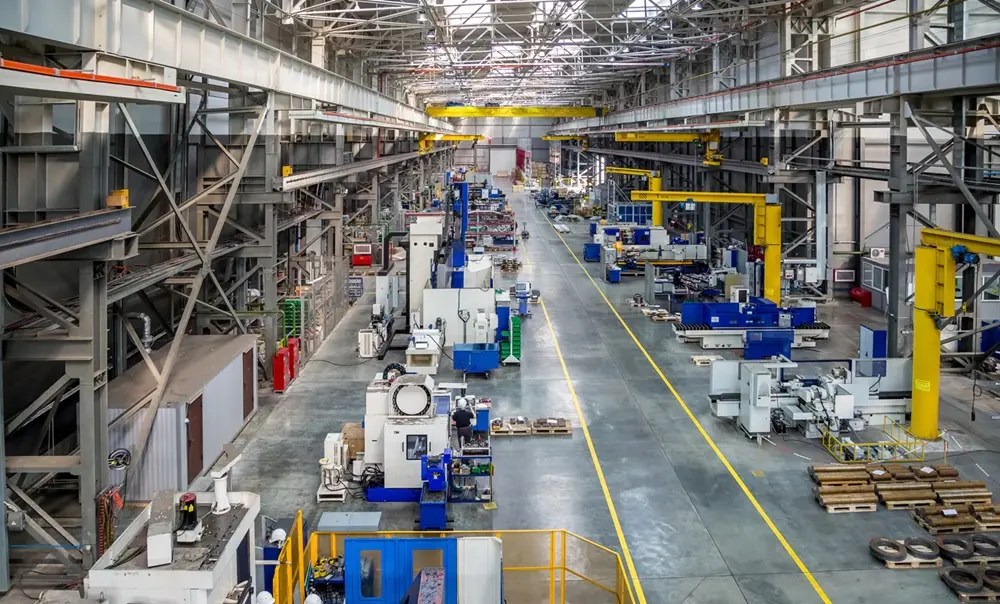Compressed air is the heartbeat of modern production, moving with the cadence of robots, conveyance systems, and precision assembly cells. In 2025, smarter controls and data-rich monitoring are transforming how facilities design, operate, and scale air networks with lower risk and higher efficiency. This guide explores the systems and strategies that make compressed air more predictable, more energy aware, and far easier to optimize across complex operations. You’ll learn how precision delivery, IoT instrumentation, analytics, and training converge to power high‑throughput lines without sacrificing reliability. Along the way, we’ll highlight practical considerations for Compressed Air For Manufacturing and note where plant teams can “View Details” in live dashboards to act quickly on insights.
How Modern Manufacturing Relies on Precision Air Delivery Systems
Precision air delivery underpins consistent torque, repeatable motion control, and the clean, dry air quality required for sensitive downstream processes. Small pressure drifts that seem trivial on a gauge can translate into dimensional variance, inconsistent sealants, or slow cycle times at the station level. That’s why leading integrators like Fluid-Aire Dynamics design looped distribution, zoned regulation, and high-resolution flow measurement to maintain tight control at the point of use. The goal is to meet demand within a narrow pressure band while preventing pressure drops and eliminating moisture, oil, and particulate that can silently degrade tooling and actuators. For facilities expanding with robotics or high-mix assembly, right-sizing headers, regulators, and dryers is the difference between frictionless uptime and chronic micro-stoppages.
Core elements that keep air precise and stable
At the heart of a precise network are dryers and filters matched to the load profile and ambient conditions, coupled with regulators that hold setpoints even as cells ramp up and down. Flow meters and pressure sensors near critical stations give operators immediate feedback on whether downstream restrictions or consumption spikes are eroding margin. A looped main with appropriately sized drops reduces velocities and pressure loss, while balanced branch circuits prevent starvation when multiple tools fire simultaneously. Control valves and isolation manifolds let maintenance teams work on one area without compromising production-wide pressure. When combined with clear standards for hose length, connector quality, and routine instrument calibration, these measures deliver the consistency Compressed Air For Manufacturing requires across every shift.
Integrating IoT Sensors for Real-Time Pressure Optimization
Factories are now embedding smart sensors throughout their air networks to create a live “digital twin” of pneumatic health. These sensors report pressure, flow, temperature, dew point, vibration, and even acoustic signatures for leak detection, streaming data to edge controllers and cloud platforms. With sufficient granularity, controls can automatically adjust compressor setpoints, open or close storage, and sequence equipment to flatten demand peaks. Operators gain contextualized alerts instead of raw alarms, with dashboards that spotlight the offending zone, probable root cause, and recommended response. And with standardized protocols, these insights can flow into MES and CMMS systems, linking production events to air system behavior for a deeper understanding of cause and effect.
Turning data into action on the factory floor
Real-time optimization starts by mapping every critical end-use area with at least one pressure transmitter and flow meter, then aggregating those signals in a controller that manages the compressor room. When consumption rises in a specific zone, the system can temporarily boost local regulation or call for additional capacity in a controlled ramp, avoiding abrupt pressure collapses that slow automation. Dashboards let users drill into asset views—the same way an HMI might invite you to “View Details”—to compare shift-by-shift performance and spot creeping inefficiencies. For plants standardizing on Compressed Air For Manufacturing best practices, this instrumentation forms the backbone of continuous improvement, tying every pressure deviation to corrective action. Over time, the facility transitions from reactive adjustments to a stable, self-tuning network that anticipates demand rather than chasing it.
Reducing Energy Waste with Variable-Speed Compressors
Energy spend on compressed air can outweigh the equipment’s acquisition cost several times over its lifecycle, which is why variable-speed drive (VSD) compressors have become foundational. By modulating motor speed to match real-time demand, VSD units avoid the frequent cycling and unload losses that plague fixed-speed machines. When paired with intelligent sequencing, a plant can run one or two VSDs as “trim” while base-load compressors operate in their most efficient zones. The result is a flatter pressure profile, lower kWh per cfm, and reduced mechanical stress across the system. Fluid-Aire Dynamics often layers in heat recovery and storage strategies, converting waste heat for space or process use and buffering short surges without spiking compressor energy.
Strategies to capture full savings potential
Sizing matters: an oversized VSD wastes energy at very low turndown, while an undersized trim unit forces base machines to chase demand. A robust control philosophy defines minimum and maximum setpoints, ramp rates, and jog limits so compressors don’t hunt or fight each other under changing loads. Air receiver placement and volume further stabilize the network, allowing slow, efficient compressor responses rather than snap decisions that cost energy. Monitoring dew point and pressure at the dryer outlet verifies that efficiency gains don’t come at the expense of air quality, especially for applications where moisture risks scrap or rework. As teams evaluate upgrades, it helps to benchmark baseline kW/cfm and then “View Details” within trend charts to validate that the new sequence consistently holds targets.
The 2025 Push Toward Carbon-Neutral Factory Operations
Sustainability targets have shifted from aspirational to operational, and compressed air is squarely in scope for Scope 2 and sometimes Scope 1 reductions. Efficient generation is the first lever, but the bigger wins often come from cutting demand via leak elimination, pressure right-sizing, and process redesign that minimizes unnecessary air use. Facilities are tying compressor rooms to renewable electricity procurement and scheduling high-load operations when green power is most available. Some are adopting advanced heat recovery to replace fossil-fueled space heating, turning compressor waste heat into a measurable carbon offset. The carbon-neutral journey is as much about governance—consistent measurement, verification, and reporting—as it is about equipment.
A practical roadmap to measurable decarbonization
Start by establishing a defensible baseline that includes energy use, leakage rate, and air quality outcomes, then set reduction targets in both kWh/cfm and total emissions. An audit identifies leaks, misapplied blow-offs, and over-pressurized circuits; correcting these frequently yields double-digit savings before any capital spend. Next, upgrade to VSD trim capacity and high-efficiency dryers, and ensure sequencing holds tight pressure bands to prevent waste. Layer in heat recovery and evaluate electrification strategies for auxiliaries, then align compressor operations with renewable energy windows to lower emissions intensity. With governance in place, periodic reviews keep the plan honest and ensure the compressed air strategy directly supports broader carbon-neutral commitments.
Case Studies: Automation Powered by Smart Air Control
Smart air control pays off fastest where automation density is high and process windows are tight. Consider a Tier 1 automotive supplier struggling with intermittent torque errors on critical fasteners across two lines; traditional monitors blamed tooling, but plantwide pressure data told a different story. Sensors revealed a recurring 6–8 psi dip during shift changes when multiple stations restarted simultaneously. After adding localized storage, tightening regulator placement, and applying a VSD trim strategy, torque defects dropped by 78% and cycle time improved by nearly half a second per fastener. The lesson: precision air delivery turns into measurable quality and throughput gains when it’s tuned to the rhythm of production.
Real-world examples and measurable outcomes
In a packaging plant adding collaborative robots, commissioning data showed that end-of-arm grippers were starved during rapid pick-and-place bursts, causing occasional drops and re-picks. A distribution redesign placed regulators closer to the grippers and introduced a supervisory control that anticipates surge events based on upstream sensor cues, bringing mis-picks down by 83% and cutting compressed air consumption 12%. In a food processing facility, dew point excursions were traced to dryer overload during sanitation cycles; sequencing changes for compressors and dryers plus a dedicated receiver for cleaning equipment stabilized dew point and extended filter life by 30%. A precision electronics assembler adopted a granular sensor grid and machine-learning leak analytics, reducing unplanned compressor starts by 22% and improving first-pass yield through steadier pressure at critical bonding stations. Each case underscores how data-informed control, not just more capacity, unlocks higher performance from existing assets.
Predictive Analytics and Maintenance Tools for Industrial Efficiency
Predictive analytics is redefining how plants schedule service and avoid unplanned downtime in compressed air systems. Instead of calendar-based maintenance, algorithms analyze vibration, current draw, temperature deltas, dew point stability, and pressure ripple to flag emerging issues. Early indicators—bearing noise spectra, dryer approach temperature drift, or rising pressure differential across filters—trigger work orders before problems compromise quality. When CMMS tools integrate with controls, maintenance windows are automatically proposed around production schedules to minimize disruption. For Compressed Air For Manufacturing programs with tight tolerance processes, this shift from reactive to predictive maintenance protects both asset life and product quality.
From signals to decisions that prevent downtime
Effective predictive strategies begin with high-quality, time-synced data from compressors, dryers, filters, and critical end-use nodes, then apply models that understand normal operating envelopes by shift and season. When anomalies arise, contextualized alerts provide confidence scores and suggested actions, such as inspecting inlet filters or verifying coolant flow before a bearing overheats. Operators and technicians benefit from at-a-glance dashboards that allow them to “View Details” on component health, trend comparisons, and maintenance history without digging through multiple systems. Over months, the system learns how changes—new tooling, a third shift, or seasonal humidity—affect air behavior, refining thresholds to reduce nuisance alarms. The combination of analytics and disciplined execution turns Compressed Air For Manufacturing into a stable utility service that quietly supports OEE and quality KPIs across the plant.
Workforce Training to Maximize System Reliability and Performance
No matter how advanced the hardware, consistent results depend on people who understand both fundamentals and the specific quirks of their facility. Operators should recognize early symptoms of pressure or quality drift, while maintenance teams need hands-on skills for diagnosing root causes across compressors, dryers, and distribution. Training accelerates adoption of new controls, ensuring setpoint changes, sequencing logic, and alarm responses are applied as intended. It also builds a common language between production and facilities staff, reducing the friction that often delays corrective action. Providers like Fluid-Aire Dynamics complement commissioning with practical, scenario-based learning that sticks beyond the first week of go-live.
Skills that elevate uptime and energy performance
Effective programs cover air quality standards, regulator and valve placement, correct hose and fitting selection, and the interplay between storage and pressure stability. Teams learn to interpret dashboards, compare shift trends, and document changes so that improvements survive personnel turnover and schedule shifts. Hands-on modules walk through leak detection techniques, dryer troubleshooting, and VSD sequencing hygiene, with practice in isolating zones and validating fixes. Finally, training demystifies analytics, showing how to interpret confidence scores, when to escalate, and how to capture lessons learned in the CMMS. With a trained workforce that knows which screens to open and where to “View Details,” plants keep reliability high, energy spend in check, and production flowing smoothly.






